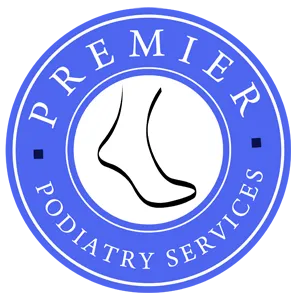- Welcome! >
- Articles
-
Bone/Joint/Tendon
- Accessory Navicular Syndrome
- Achilles Tendon Rupture
- Ankle
- Arch Pain
- Arch Supports
- Bone Healing
- Bone Infection
- Bone Tumors in the Foot
- Brachymetatarsia
- Bunions (Hallux Abducto Valgus)
- Bursitis
- Calcaneal Apophysitis (Sever's Disease)
- Calf Pain
- Capsulitis of the Second Toe
- Cavus Foot (High-Arched Foot)
- Charcot Foot
- Chronic Ankle Instability
- Clubfoot
- Cold Feet
- Common Disorders of the Achilles Tendon
- Drop Foot
- DVT (Deep Vein Thrombosis)
- Extra Bones
- Fallen Arches
- Fifth Metatarsal Fracture
- Flatfoot
- Foot Arthritis
- Foot Drop
- Fracture
- Gangrene
- Gout
- Haglund's Deformity
- Hallux Rigidus
- Hammertoes
- Heel Pain (Plantar Fasciitis)
- High-Arched Foot
- Intermetatarsal Neuroma
- Intoeing
- Joint Pain in the Foot
- Joint Swelling in the Foot
- Lisfranc Injuries
- Os Trigonum Syndrome
- Osteoarthritis of the Foot and Ankle
- Osteomyelitis (Bone Infection)
- Osteopenia
- Osteoporosis
- Peroneal Tendon Injuries
- Pigeon-toes
- Posterior Tibial Tendon Dysfunction (PTTD)
- R.I.C.E Protocol
- Restless Legs
- Rheumatoid Arthritis in the Foot and Ankle
- Sesamoid Injuries in the Foot
- Shin Splints
- Swollen Feet
- Synovitis
- Tailor's Bunion
- Talar Dome Lesion
- Tingly Feet
- Tired Feet
- Toe Walking
- Turf Toe
- Varicose Veins
- Webbed Toes
-
Nails and Skin
- Athlete's Foot
- Black Toenails
- Callus
- Contact Dermatitis
- Corns
- Cracked Heels
- Dermatitis
- Dry Heels
- Eczema of the Foot
- Foot Bumps
- Foot Lumps
- Foot Odor
- Foot Rash
- Frostbite
- Fungal Nails
- Ganglion Cyst
- Heel Fissures
- Inflammation: Acute
- Ingrown Toenails
- Malignant Melanoma of the Foot
- Plantar Fibroma
- Plantar Wart (Verruca Plantaris)
- Pump Bump (Hallux Rigidus)
- Puncture Wounds
- Rash
- Raynauds Phenomenon
- Skin Cancer of the Foot and Ankle
- Smelly Feet
- Sweaty Feet
- Thick Toenails
- Warts
- White Toenails
- Wounds/Ulcers
- Wounds-Puncture
- Yellow Toenails
- Diabetic Health
-
Fitness and Your Feet
- Baseball Injuries to the Foot and Ankle
- Basketball Injuries to the Foot and Ankle
- Field Hockey Injuries to the Foot and Ankle
- Football Injuries to the Foot and Ankle
- Golf Injuries to the Foot and Ankle
- Lacrosse Injuries to the Foot and Ankle
- Rugby Injuries to the Foot and Ankle
- Running and Track Injuries to the Foot and Ankle
- Soccer Injuries to the Foot and Ankle
- Softball Injuries to the Foot and Ankle
- Tennis Injuries to the Foot and Ankle
- Volleyball Injuries to the Foot and Ankle
- Orthotics and Footwear
- Compartment Syndrome
- Deep Vein Thrombosis (DVT)
- Equinus
- Instructions for Using Crutches
- Staph Infections of the Foot
